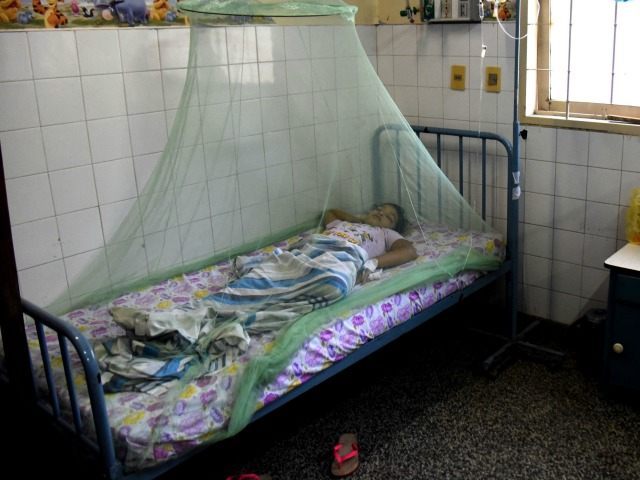Zika survivors have shared their stories with the media about their experiences with the disease, including links to the rare Guillan-Barré syndrome.
A survivor based in New York City told CBS News his joints “felt like lead weights.” The “prize-winning Brazilian-American well known in the performing arts” did not want CBS to identify him.
The man known as João and twelve colleagues contracted Zika last spring while in Brazil. He developed Guillain-Barré syndrome shortly after he recovered from Zika.
“I was on my way to the airport to leave and had to turn back,” he claimed.
He decided to seek treatment at a private hospital since the public hospitals had too many patients. João then spent two more weeks in bed at home.
“Everyone knows the Zika symptoms, because so many people get it. With Guillain-Barré, I was paralyzed, I could not walk. All of my joints felt like lead weights,” he said.
Three Brazilian doctors misdiagnosed João. He received the correct diagnosis when he returned to New York City.
“At Beth Israel, I was diagnosed with Guillain-Barré deriving from the Zika virus and had a relapse, at which point the hospital thought I might need blood work, but that did not have to happen,” he continued. “They had never seen a case of Zika, but they said I was recovering well.”
The government now requires local officials to report Guillain-Barré due to the hundreds of cases Zika outbreak areas.
“Guillain-Barré can be a nightmare for those who have it,” Dr. Wellington Galvão, a hematologist in the city of Maceió in northeast Brazil, told The New York Times. “I estimate that Zika increases by about 20 times the probability that an individual can get Guillain-Barré.”
Galvão treated 43 patients with Guillain-Barré in 2015. The country averages obly 10 to 15 cases a year.
The syndrome struck Patricia Brito, a cashier at a local bakery. One day she could move her legs. Next thing she knew she could not feel “her arms, her face and the rest of her body.” Doctors placed “her on a ventilator in an intensive care unit for 40 days.” Brito attends physical therapy “to avoid using a wheelchair.” There is no cure for the syndrome, but Mayo Clinic describes two treatments:
Plasma exchange (plasmapheresis). The liquid portion of part of your blood (plasma) is removed and separated from your blood cells. The blood cells are then put back into your body, which manufactures more plasma to make up for what was removed. Plasmapheresis may work by ridding plasma of certain antibodies that contribute to the immune system’s attack on the peripheral nerves.
Immunoglobulin therapy. Immunoglobulin containing healthy antibodies from blood donors is given through a vein (intravenously). High doses of immunoglobulin can block the damaging antibodies that may contribute to Guillain-Barre syndrome.
El Savador recorded 46 cases of Guillain-Barré between December 1 and January 6. The country averages 14 cases a month. In Colombia, Deputy Health Minister Fernando Ruiz reported 41 cases of Guillain-Barré “that appear to be linked to Zika infections.” Venezuelan Health Minister Luisana Melo announced 255 cases of Guillain-Barré syndrome. Former Health minister Jose Oletta claimed that number proves Venezuela has more than the estimated 4,500 Zika cases.
“Normally, we’d expect 30 or 40 cases of Guillain-Barré a month,” he said. “What this shows is that the minister has the total number of Zika cases wrong.”
Lizzie Morales contracted the Zika virus when she visited family in El Salvador over Christmas.
“You have no strength or energy to sit down,” she described. “You just want to lay down and sleep.”
Her first symptoms included body aches and headaches followed by a rash. Vomiting occurred at the end of the infection.
“It was all over,” she continued. “Christmas Eve I was scratching. My chest, bumps on my lips, eyes, and ears.”
She received medication in El Salvador.
Rio de Janeiro survivor Jane Miranda told ABC News caught Zika last October. It also caused a rash that covered her face and chest.
“I started having a fever sensation, without a fever at this point,” she wrote to the network. “My eyes also got irritated. It was very strange, but since I was alone and my parents were out, I decided to wait to visit a doctor.”
She visited a doctor, who confirmed she had Zika. The virus also gave her fatigue.
“For the whole week, I had mild fever and the joint and muscle pain became stronger. I couldn’t move or close my hands very well and my felt legs weak,” she said. “The pain lasted for more than a week, but after the first week I almost didn’t feel any pain.”
The National Institutes of Health confirmed that the Zika virus outbreak has reached pandemic levels in Latin America.
“You have multiple countries in South America and in the Caribbean, so by anybody’s definition that would be considered a pandemic,” explained Dr. Anthony Fauci, head of the infectious diseases branch at the institute.

COMMENTS
Please let us know if you're having issues with commenting.